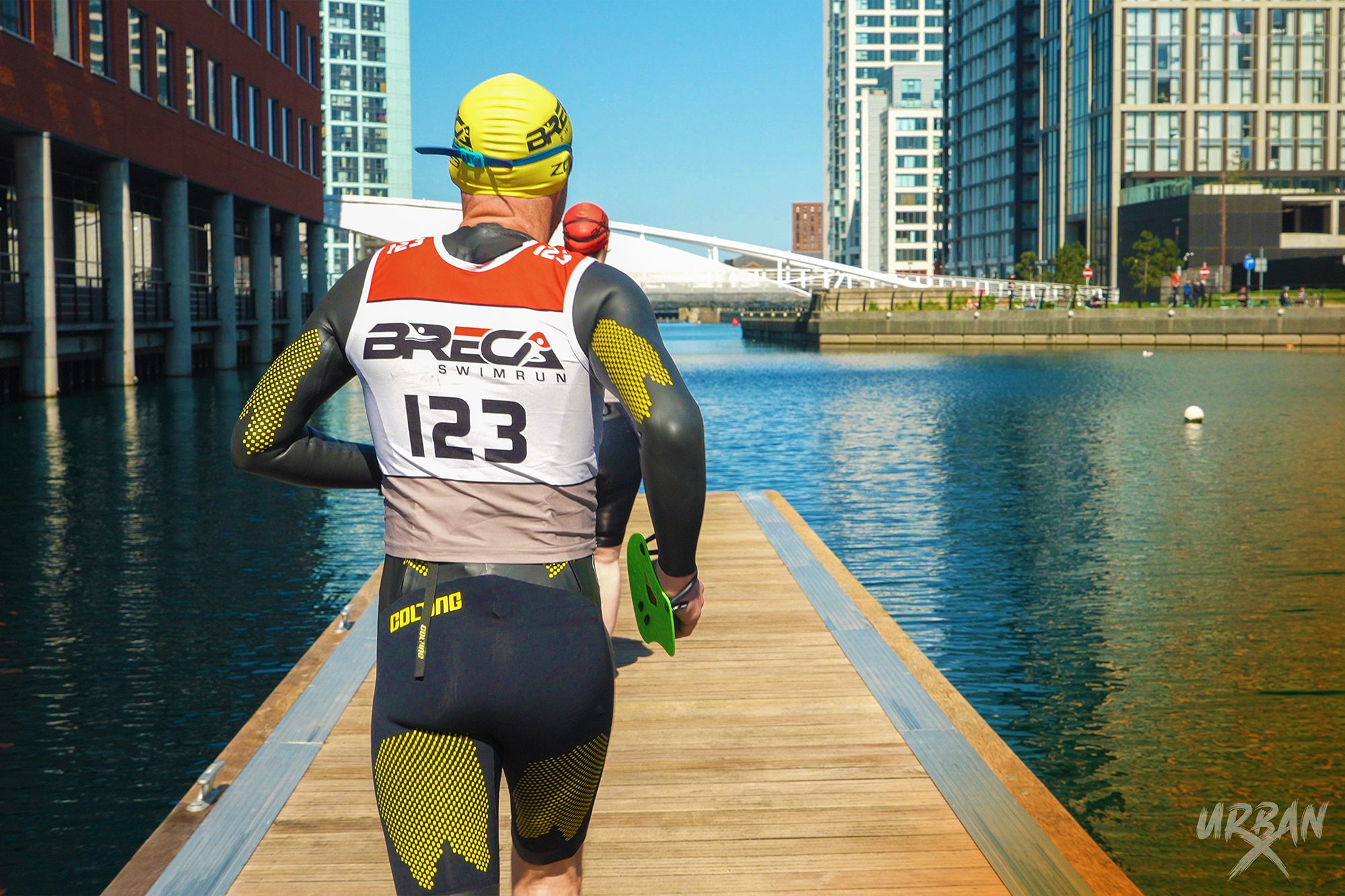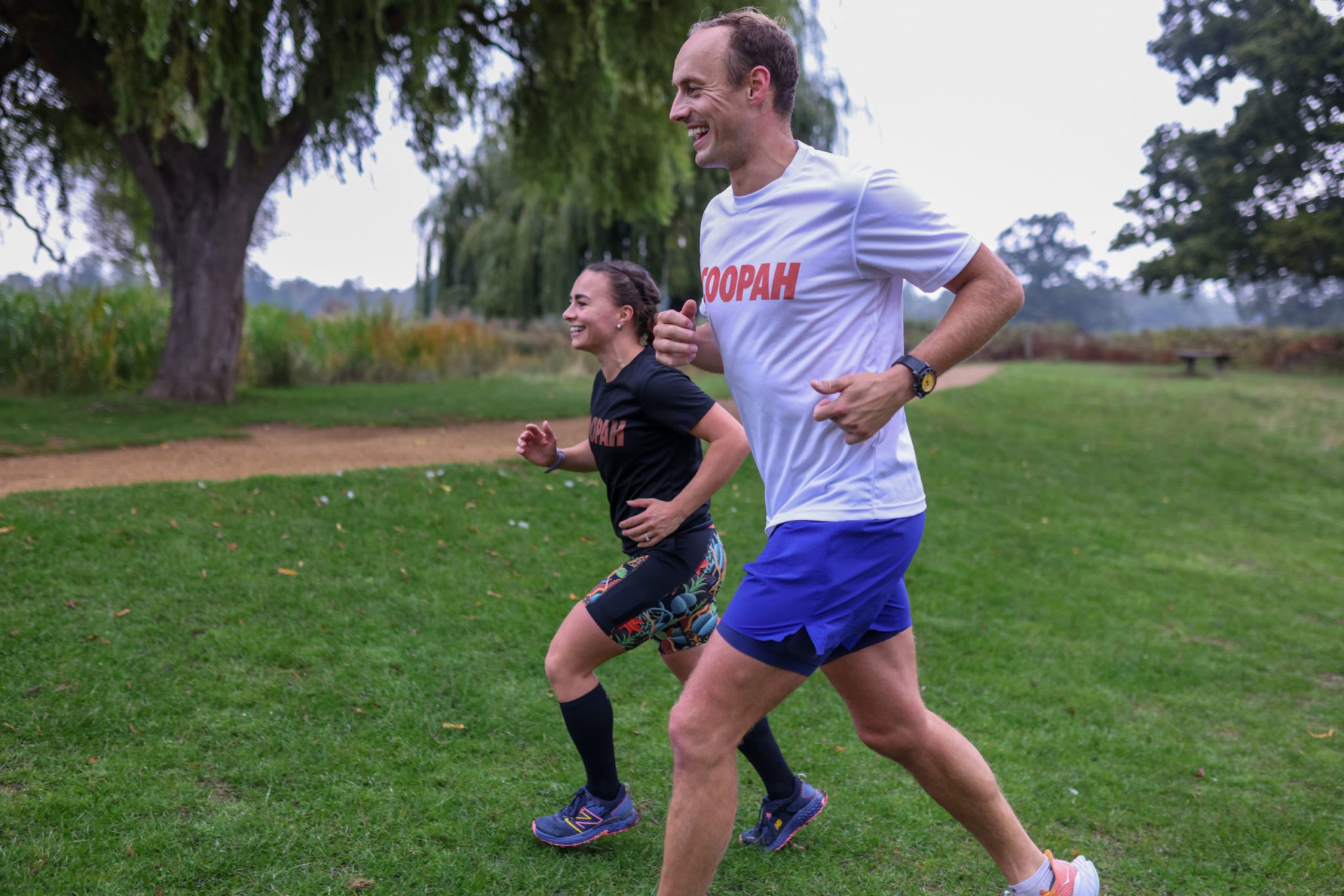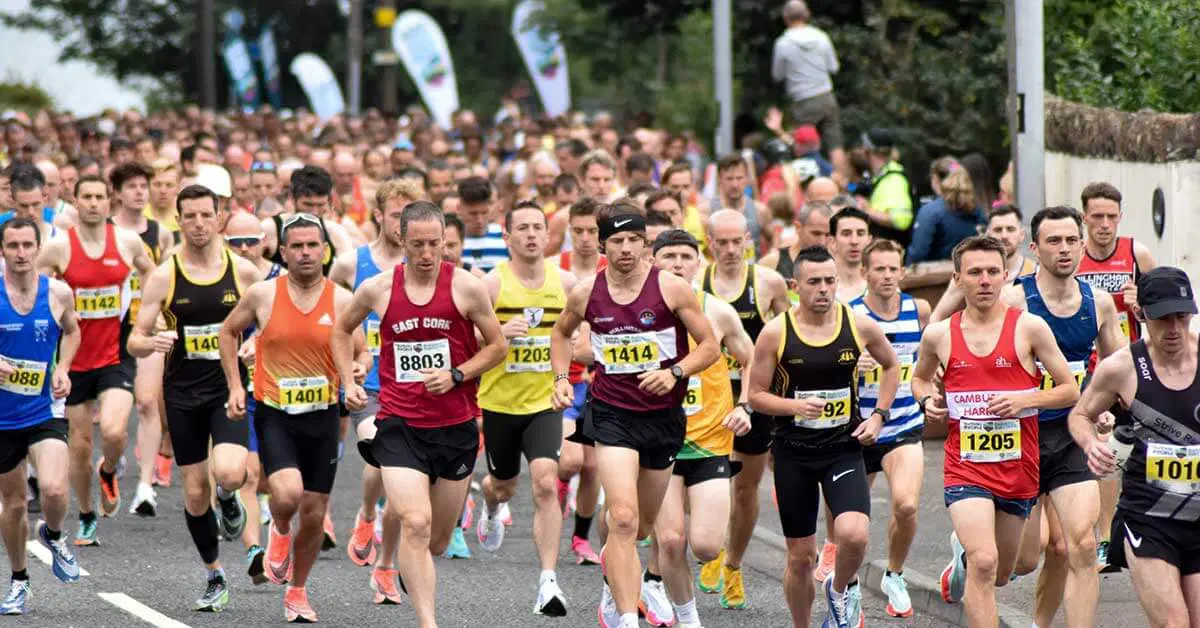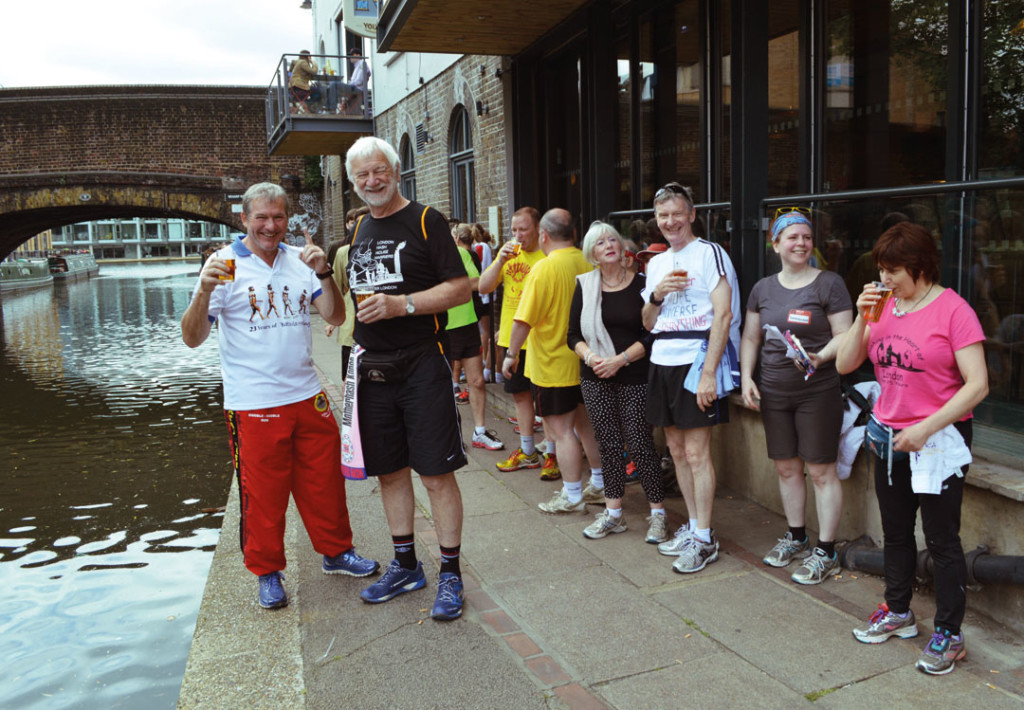 Running clubs come in all shapes and sizes, and with over 1,400 of them in existence in the UK alone, we are spoilt for choice. Whether you’re a leisurely social runner, a die-hard, or somewhere in between, if it’s the pack-mentality you’re after there’s bound to be one for you. MR took a closer look at five of the world’s quirkiest running clubs.
Running clubs come in all shapes and sizes, and with over 1,400 of them in existence in the UK alone, we are spoilt for choice. Whether you’re a leisurely social runner, a die-hard, or somewhere in between, if it’s the pack-mentality you’re after there’s bound to be one for you. MR took a closer look at five of the world’s quirkiest running clubs.
the hash house harriers, worldwide
Concerned with the art of balancing beer and running. A stalwart by-product of the British Empire, The Harriers formed in 1939 when Colonial Officers and British expatriates began meeting for a Monday evening run to shake off the weekend’s excesses. A registered society, their constitution outlines their primary aims as being to ‘acquire a good thirst and satisfy it in beer’, and to ‘persuade older members that they are not as old as they feel’.
Traditionally a ‘hare’ sets off to mark a route for the ‘hashers’ to chase. The run can vary in length, but typically begins and ends at a pub. Hashing exists to this day in varying shades of its original colonial form, in voluntary ‘chapters’ worldwide. The hash itself has no fixed constraints in its length or duration. For many, testing the boundary between health-beneficial exercise and a pub-crawl it is at the forefront of the hashing ethos. Trails are marked in chalk on pavement or with piles of stones. Rules and dress vary for each ‘chapter’. An event for the calendar is the Red Dress Run: a day in which hashers dress in red, in memory of a young hasher in the 1980s who wrote her name into the history books by refusing to allow a wardrobe malfunction to impact her day, choosing instead to run in a silk dress and heels.
worldharrierorganization.com
the divine madness running club, colorado
The Divine Madness Running Club is, indeed, as mysterious as the name suggests. The free-masonry of the running world, this club was formed in the 90s by Marc Tizer, admitting only the most dedicated of ultramarathon runners prepared to take their training to the extreme.
Members were encouraged to follow regimented training regimes, allegedly clocking 130 miles a week. They were famous for their pack mentality, with all members expected to live under the same roof, and to fully embrace Tizer’s unorthodox training methods. One of these was ‘muscle testing’: a practice by which the application of pressure against an outstretched arm is said to determine a number of factors about the runner’s health, from physical state down to shoe size.
The club’s successes made headlineswhen Divine Madness runner Steven Paterson won the Leadville 100 five consecutive times. However, Tizer’s questionable training philosophy attracted the club serious negative attention, including a prominent sexual harassment court case in 1996, and accusations of emotional manipulation. Previous members claim that they were threatened with “physical illness and emotional destruction” on trying to leave the club. The club attracted renewed attention when Mark Heinemann died of pneumonia following a 220-mile ultramarathon, raising concerns about the club’s methods, with many claiming that they behaved more like a cult than a club.
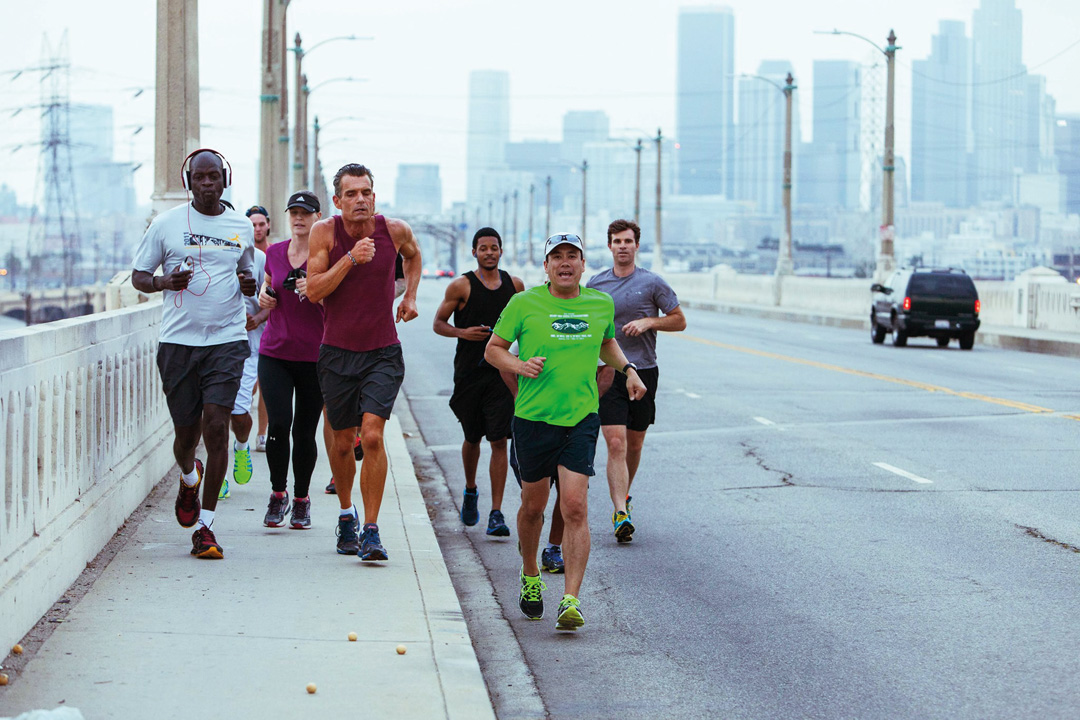 midnight mission running club, los angeles
midnight mission running club, los angeles
The word ‘therapy’ is all too often used to describe the sport of running, but when superior court judge Craig Mitchell formed a running club for the homeless and recovering addicts of notorious Skid Row Shelter and Addiction Center, LA, it took the running community by storm. The idea kicked off when Mitchell was invited to visit the shelter by a former convict he had sentenced several years earlier. A keen runner himself, Mitchell pushed the idea into fruition as a leveling activity that would help contribute to the recovery and rehabilitation of its members.
Mitchell says: “I find that people in recovery are some of the most welcoming and honest people I have ever met. And when we start running, I’m not ‘the judge’ and they’re not ‘homeless’. We are all just trying to cover the distance.”
In 2013, Mitchell and three members of the club flew to Ghana to take part in The Accra marathon. The following year, 15 runners completed the LA marathon. On the back of its success, 10 members soon found themselves registered and training towards a marathon in Rome, Italy, in 2015.
midnightmission.org/program-services/rome-2015
oregon state penitentiary athletic club, oregon
When you think of a maximum-security prison, the type of running that springs to mind tends to be for all the wrong reasons; but in Oregon State Penitentiary, running for pleasure has fast become the most prized activity on the block. The OSP Athletics Club, formed by male inmates 40 years ago, affords its incarcerated members the time to train and take part in monthly races that are open to members of the public. For many of the convicts serving tougher sentences, contact with the outside world is limited, and the race days are the only contact they have with life outside the prison walls.
In a recent interview with The Week, one inmate, James, said: “When I run, I don’t see the walls. There’s a tremendous amount of realisation that life has to go on. It can get pretty rough and dark in here. But we’re not just going to be here.”
The club is 130 members strong, and requires 18 months of good behaviour for admittance. The monthly race series open to members of the public include a 5K, 10K and a half-marathon.
wvroadrunners.org/penitentiary.pdf
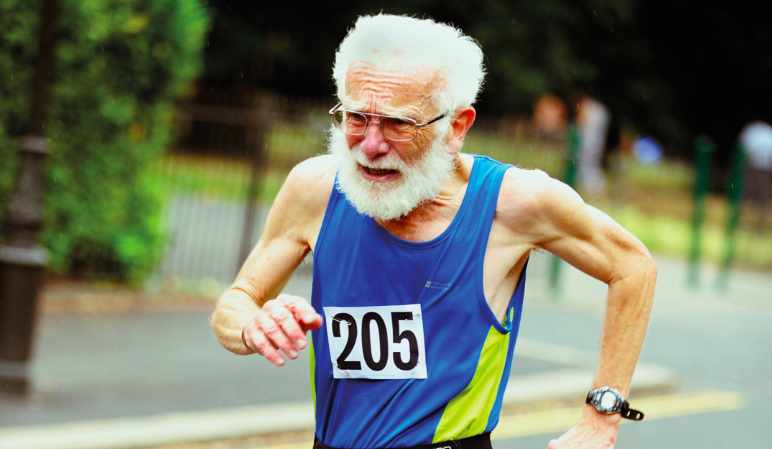 the veterans’ athletic club, london
the veterans’ athletic club, london
Established in 1931, the Veterans’ Athletic Club is one of a fraction of clubs aimed at the more seasoned and experienced runner. This one in particular only admits keen beans above and beyond the age of 35, to whom the prospect of playing bridge and hanging up their running shoes is just not cricket. Based in London and the South West, they organise training meets, cross-country runs, track and road races and field athletics events – all ‘for men and women athletes in their prime’.
Whatever you do, don’t be fooled by the silver hair and 80s-style vests; the VAC boasts an impressive alumni among its 600-strong ranks, from former Olympians (Ron Franklin, Melbourne 1956) to members of the ‘Ever-Present’ club of runners to have completed every London Marathon since its origins in 1981. This group of ‘ever-present’ runners is a diminishing one, however – a fact made poignantly clear by the fact that the club website sports its own obituary page.
vetsac.org.uk


